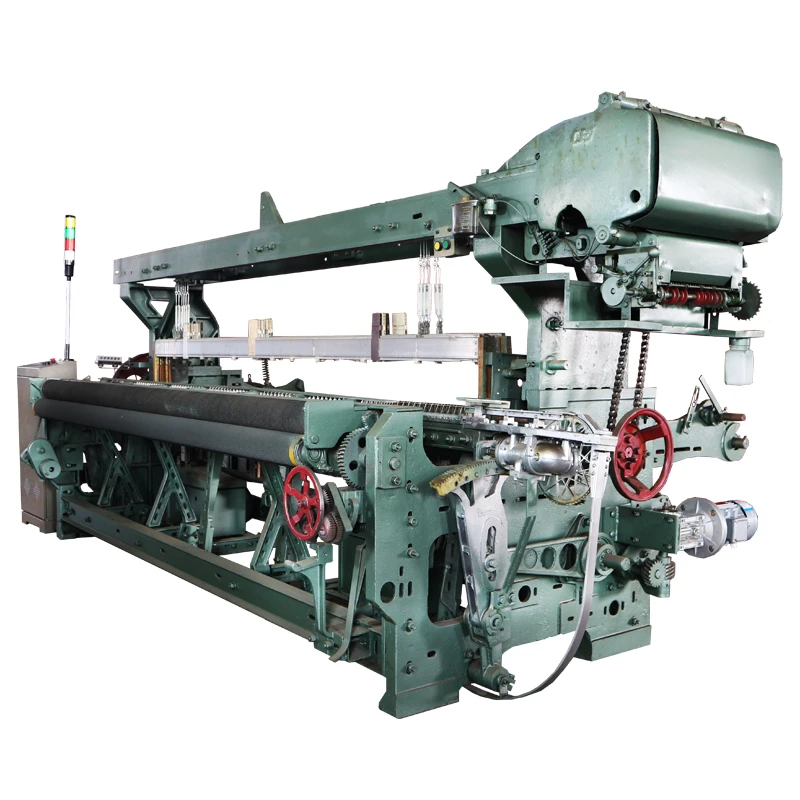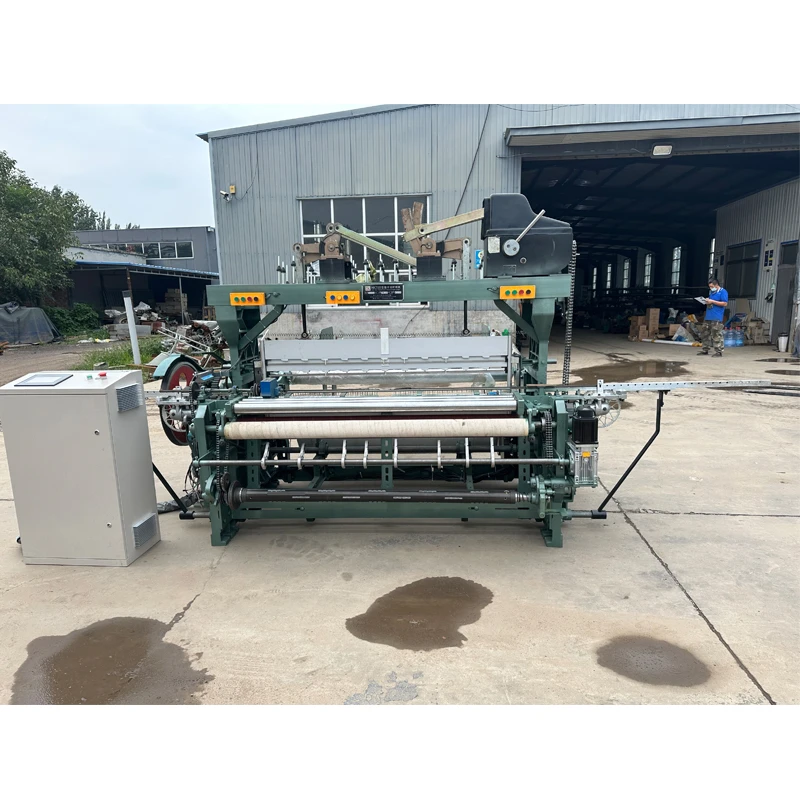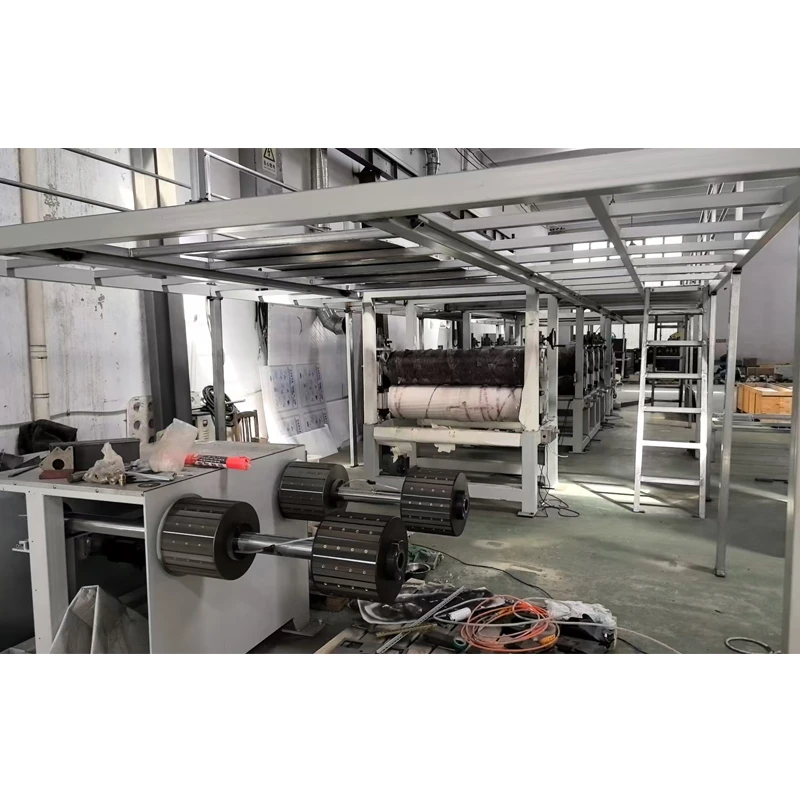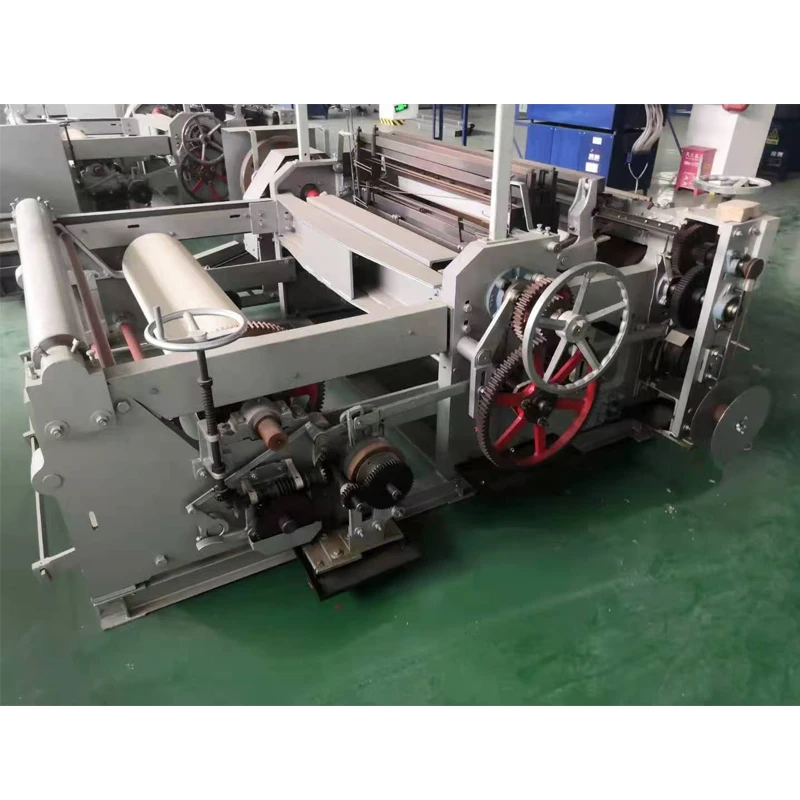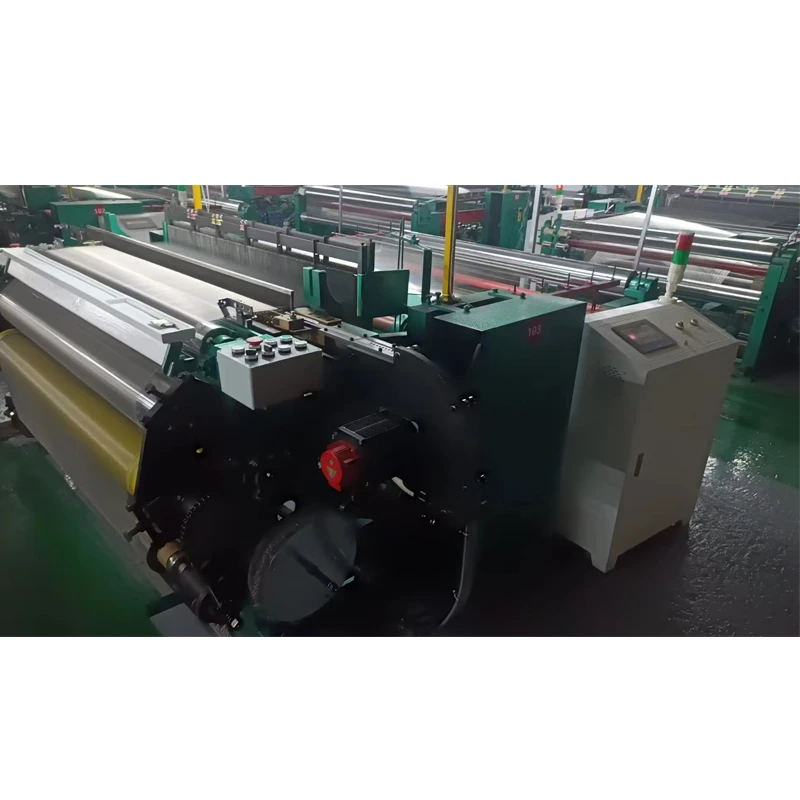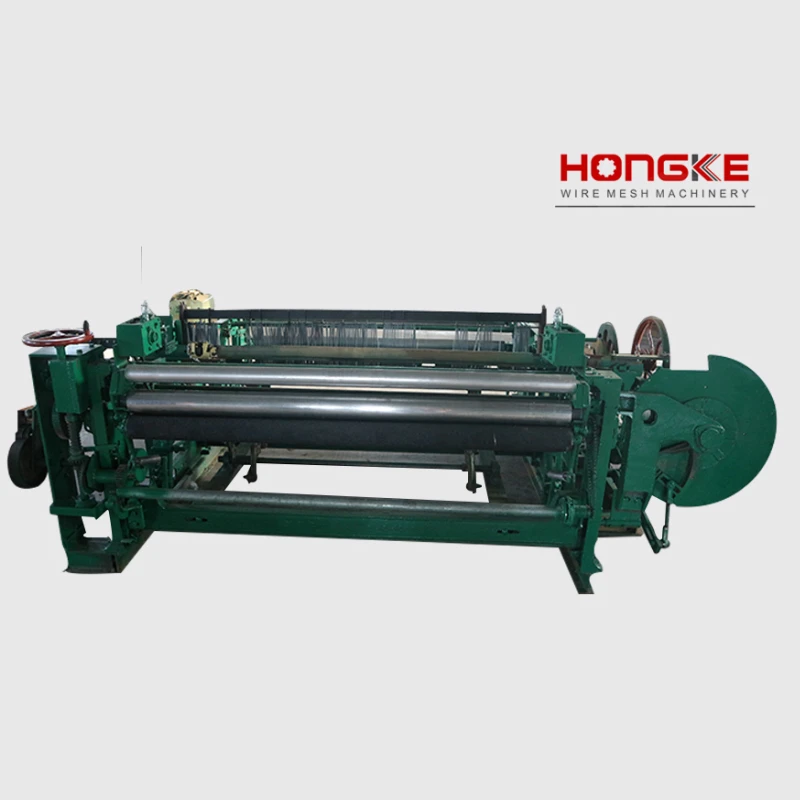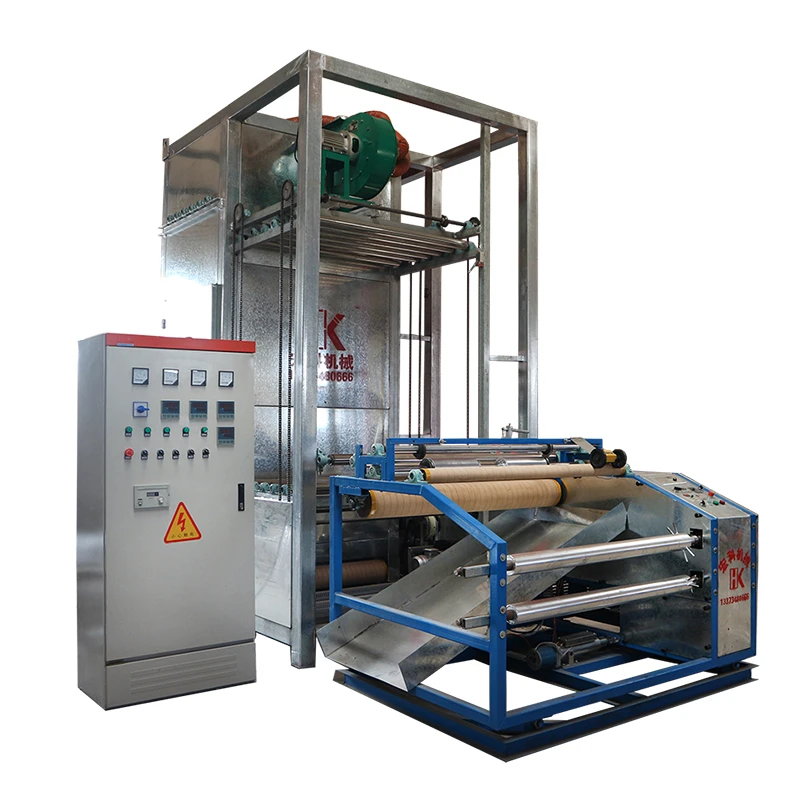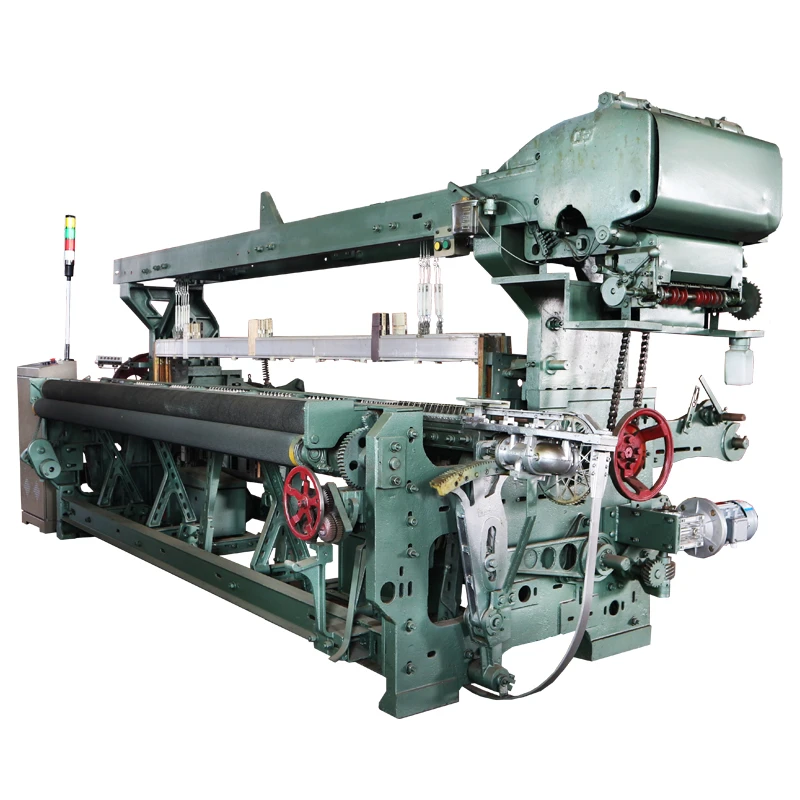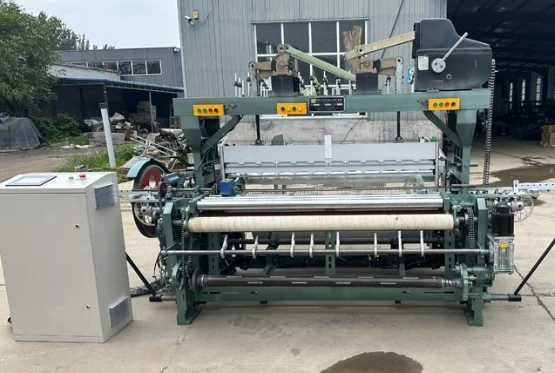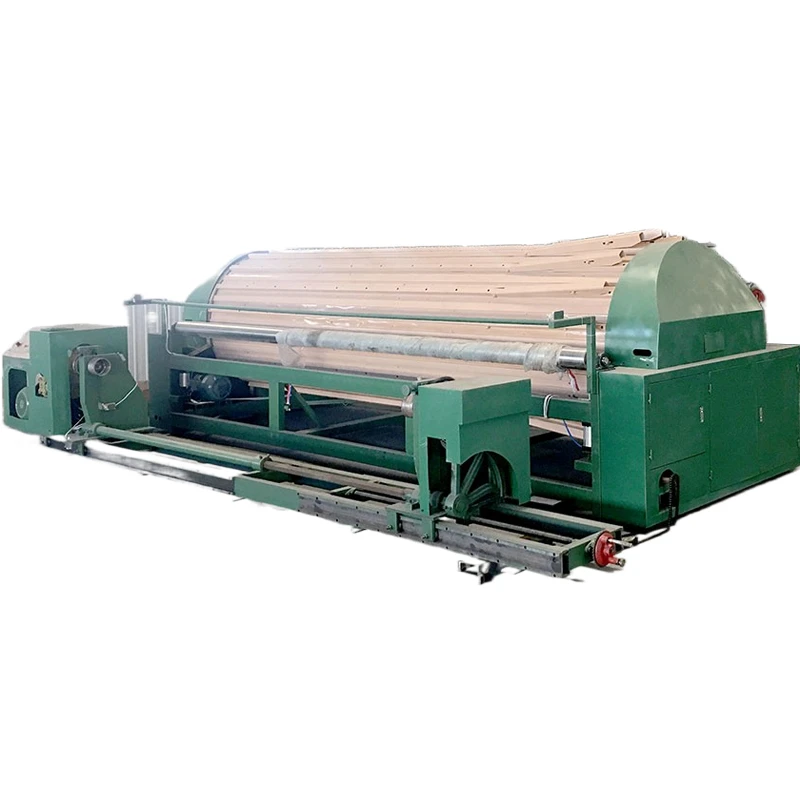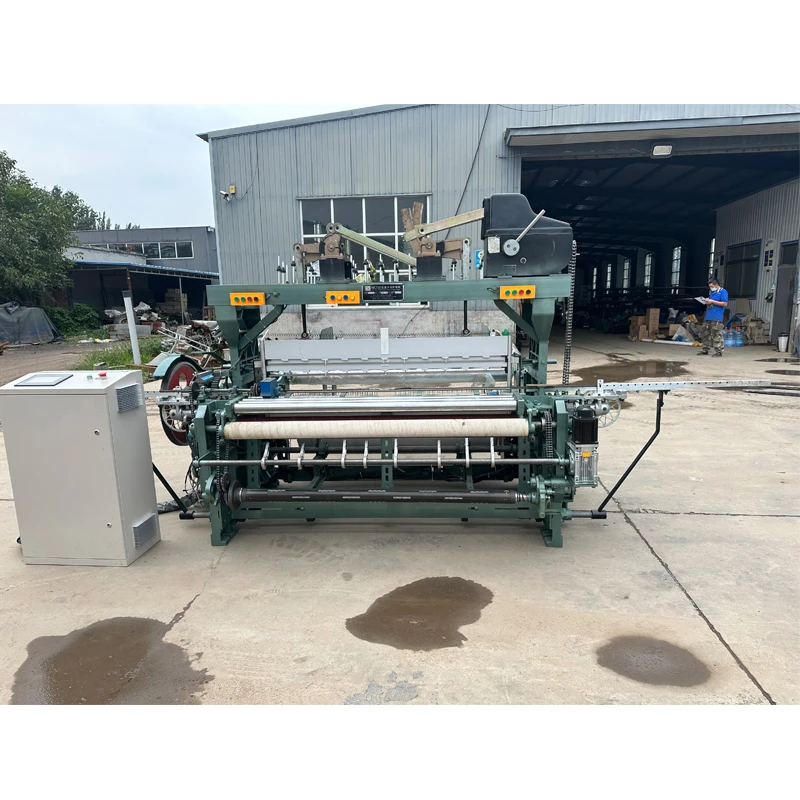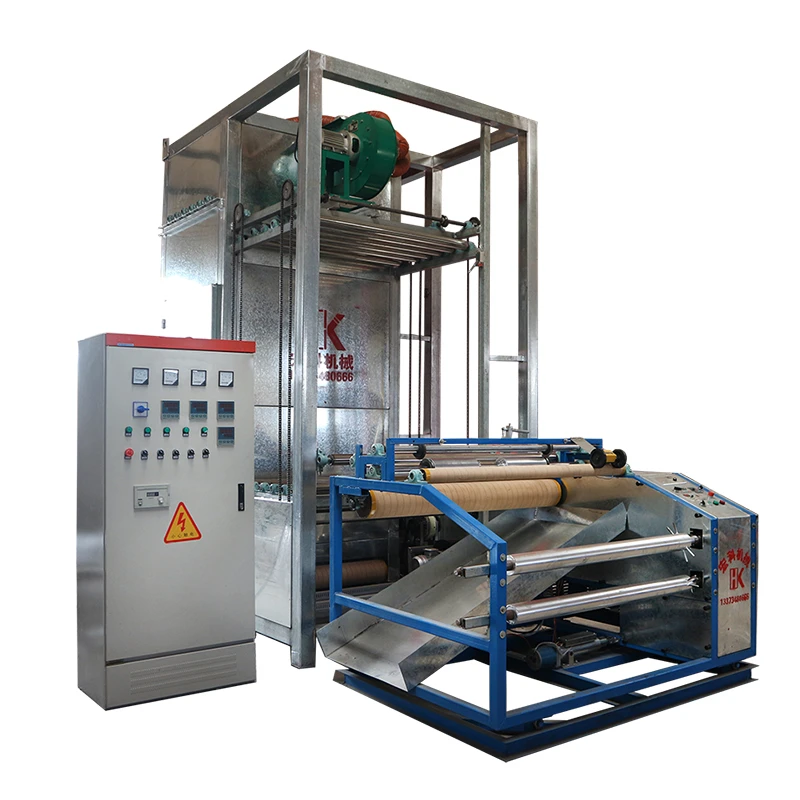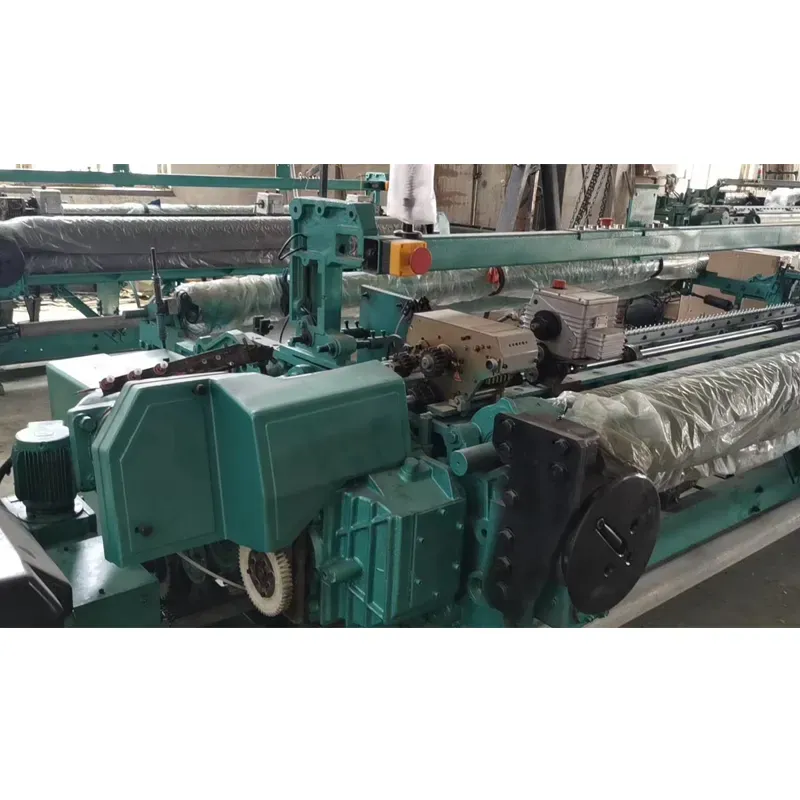
- Introduction to Shuttleless Rapier Looms: Revolutionizing Textile Weaving
- Technical Advantages and Market Landscape
- Key Manufacturers: Performance and Price Comparison
- Customization: Tailoring the Rapier Power Loom to Specific Production Needs
- Application Cases: Industry Sectors Benefiting from Rapier Technology
- Future Developments: Trends, Digitalization, and Sustainability
- Conclusion: Shuttleless Rapier Loom—Driving Innovation in Modern Textile Mills

(shuttleless rapier loom)
Introduction to Shuttleless Rapier Loom: Revolutionizing Textile Weaving
The shuttleless rapier loom
stands at the forefront of textile weaving innovations, having dramatically transformed the efficiency, precision, and flexibility of fabric production worldwide. As one of the most widely adopted weaving technologies, the rapier loom enables manufacturers to achieve higher output, produce complex fabrics, and optimize operational costs. This progress has triggered a surge in global demand, with the shuttleless rapier loom price reflecting the machine’s evolving capabilities and market presence. In the subsequent sections, we will delve into the factors driving the success of rapier looms, from technical advantages to real-world application scenarios.
Technical Advantages and Market Landscape
The transition from traditional shuttle looms to shuttleless rapier looms marks a pivotal moment in the textile industry. A standout benefit is the substantial boost in weaving speed. While shuttle looms generally operate at 150–200 picks per minute, rapier looms typically reach 500–700 picks per minute—and advanced models exceed 850 picks/min. This high-speed performance translates directly into increased production rates and reduced operational costs per meter of fabric.
Precision engineering ensures minimal thread breakage, superior fabric uniformity, and seamless handling of a diverse range of yarns—from natural fibers like cotton and wool to synthetics such as polyester and nylon. According to industry reports, downtime for maintenance and threading is slashed by up to 65% when compared to legacy systems.
The latest market analysis projects the global rapier loom market to expand at a CAGR of 5.9% during 2024–2029, with primary growth witnessed in developing textile hubs. This expansion underscores increasing adoption across apparel, home textiles, and industrial fabric segments.
Key Manufacturers: Performance and Price Comparison
Investing in shuttleless rapier loom technology involves careful evaluation of machine capabilities, support networks, and cost. Top global players bring unique advantages in terms of technology integration, after-sales service, scalability, and overall cost-effectiveness.
Here is a comparative table summarizing key features and price indications of leading manufacturers:
| Manufacturer | Model Range | Max Speed (Picks/min) | Weaving Width (cm) | Automation Features | Indicative Price (USD) | Warranty |
|---|---|---|---|---|---|---|
| Picanol | OptiMax-i | 850 | 190–540 | IoT, Auto Warp Tie | 90,000–135,000 | 2 years |
| Dornier | PD8 | 750 | 170–540 | Remote Diagnostics | 98,000–140,000 | 2 years |
| SMIT | 2FAST | 800 | 170–360 | User-Friendly Interface | 75,000–115,000 | 1 year |
| Jingwei | JWG910 | 750 | 150–360 | Automation Ready | 60,000–88,000 | 1 year |
| Tsudakoma | ZAX9200 | 800 | 190–340 | Energy Saving | 95,000–135,000 | 2 years |
While the shuttleless rapier loom price varies due to machine specifications and geographic location, buyers now prioritize energy efficiency, digital integration, and after-sales support as critical differentiators.
Customization: Tailoring the Rapier Power Loom to Specific Production Needs
Modern rapier power looms offer vast customization possibilities, enabling textile producers to align machinery with niche product lines or variable market demands. Configurable weaving widths and adjustable rigidity of rapier heads address unique yarn properties and weaving tensions. Furthermore, modular electronic jacquard attachments facilitate the creation of intricate designs without changing the main loom body.
Environmental concerns drive the adoption of energy-saving motors and waste-minimizing let-off systems. For instance, looms fitted with direct-drive servo motors have demonstrated up to 24% lower energy consumption, lowering both operational costs and carbon footprint.
Flexible automation modules, such as auto pick finders, integrated monitoring sensors, and predictive maintenance tools, ensure maximum uptime—even across bespoke production runs or rapidly shifting order volumes.
Application Cases: Industry Sectors Benefiting from Rapier Technology
Shuttleless rapier upgradation is creating new business horizons across several textile industry segments:
- Apparel Textiles: Premium suiting, shirting, technical blends—thanks to the loom’s finesse and repeatability.
- Home Furnishings: Curtains, upholstery, and bed linens benefit from increased width and complex patterning.
- Industrial Textiles: Conveyor belts, filtration fabrics, and flame-resistant materials produced at high speed and consistency.
In 2023, a leading European home textile manufacturer reported a 27% increase in productive output and a 12% reduction in energy costs after migrating 70% of its machines to shuttleless rapier looms. Likewise, a South Asian apparel exporter achieved a first-pass yield of 98.5% on technical shirting, leveraging custom jacquard modules for pattern variation with minimal downtime.
Future Developments: Trends, Digitalization, and Sustainability
The future of shuttleless weaving lies in intelligent automation, digital interconnectivity, and green manufacturing. Internet-of-Things (IoT) enabled rapier looms are already supporting real-time performance analytics, remote troubleshooting, and supply chain integration. By 2028, it is estimated that more than 40% of new installations in leading textile nations will feature cloud-based monitoring for proactive repair and scheduling.
Sustainability is now a cornerstone for innovation. Major manufacturers are trialing recyclable composite machine frames and biodegradable lubricants; these developments are further driving global investments. The “Industry 5.0” vision, emphasizing collaborative robotics and sustainability, will likely redefine machine operation, safety standards, and lifecycle management in weaving mills.
Conclusion: Shuttleless Rapier Loom—Driving Innovation in Modern Textile Mills
The shuttleless rapier loom has solidified its status as a transformative technology in textile manufacturing. With rapid advances in speed, versatility, and automation, coupled with customization and digital integration, rapier looms empower producers to achieve new benchmarks in fabric quality, efficiency, and ecological responsibility. Competitive pricing models, robust after-sales support, and the commitment to intelligent manufacturing ensure that the rapier power loom continues to be the preferred choice for forward-thinking textile enterprises eager to adapt and thrive in a rapidly evolving market.
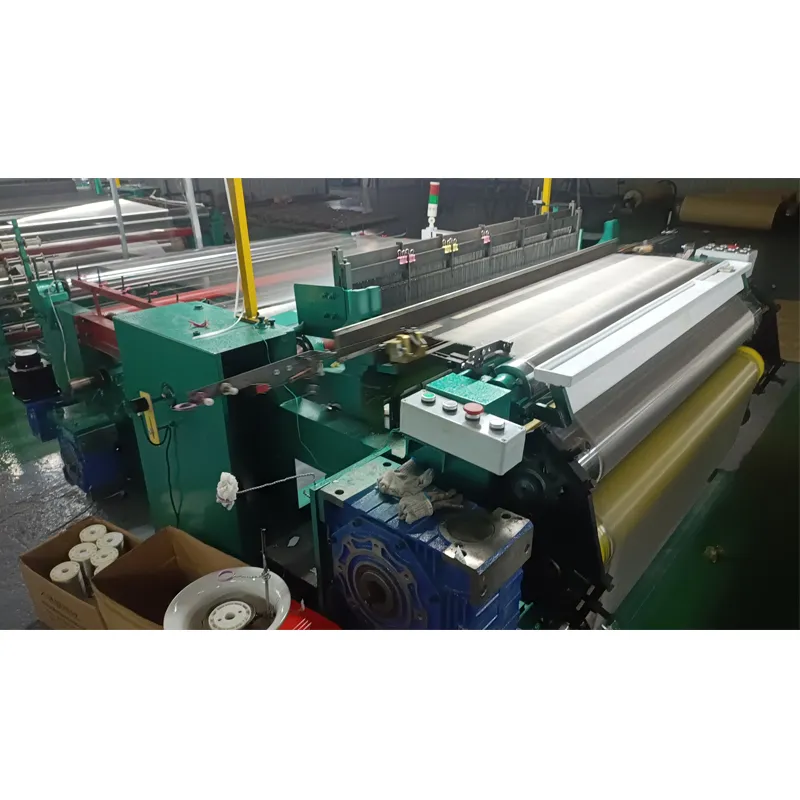
(shuttleless rapier loom)
FAQS on shuttleless rapier loom
Q: What is a shuttleless rapier loom?
A: A shuttleless rapier loom is a type of weaving machine that uses rapiers instead of shuttles to insert the weft yarn. This method improves weaving speed and fabric quality. It is widely used in the textile industry.Q: How does a rapier power loom differ from a shuttle loom?
A: A rapier power loom uses flexible or rigid rapiers to carry the weft, while a shuttle loom uses a shuttle. Rapier looms are faster and produce less noise. They also work well with a variety of yarns and patterns.Q: What factors affect the shuttleless rapier loom price?
A: The price of a shuttleless rapier loom depends on its size, features, automation level, and brand. Additional options like electronic control systems can increase its cost. Factory location and shipping also play a role.Q: Why are shuttleless rapier looms preferred in modern textile manufacturing?
A: They provide higher speed, better efficiency, and improved fabric quality compared to traditional shuttle looms. Rapier looms also reduce yarn breakage and are versatile for various materials. This makes them ideal for mass production.Q: Where can I buy a shuttleless rapier loom and get price information?
A: Shuttleless rapier looms can be purchased from specialized textile machinery manufacturers and suppliers online. You can request a quote to get up-to-date price information. Always compare features and warranties before buying.
Pervious








